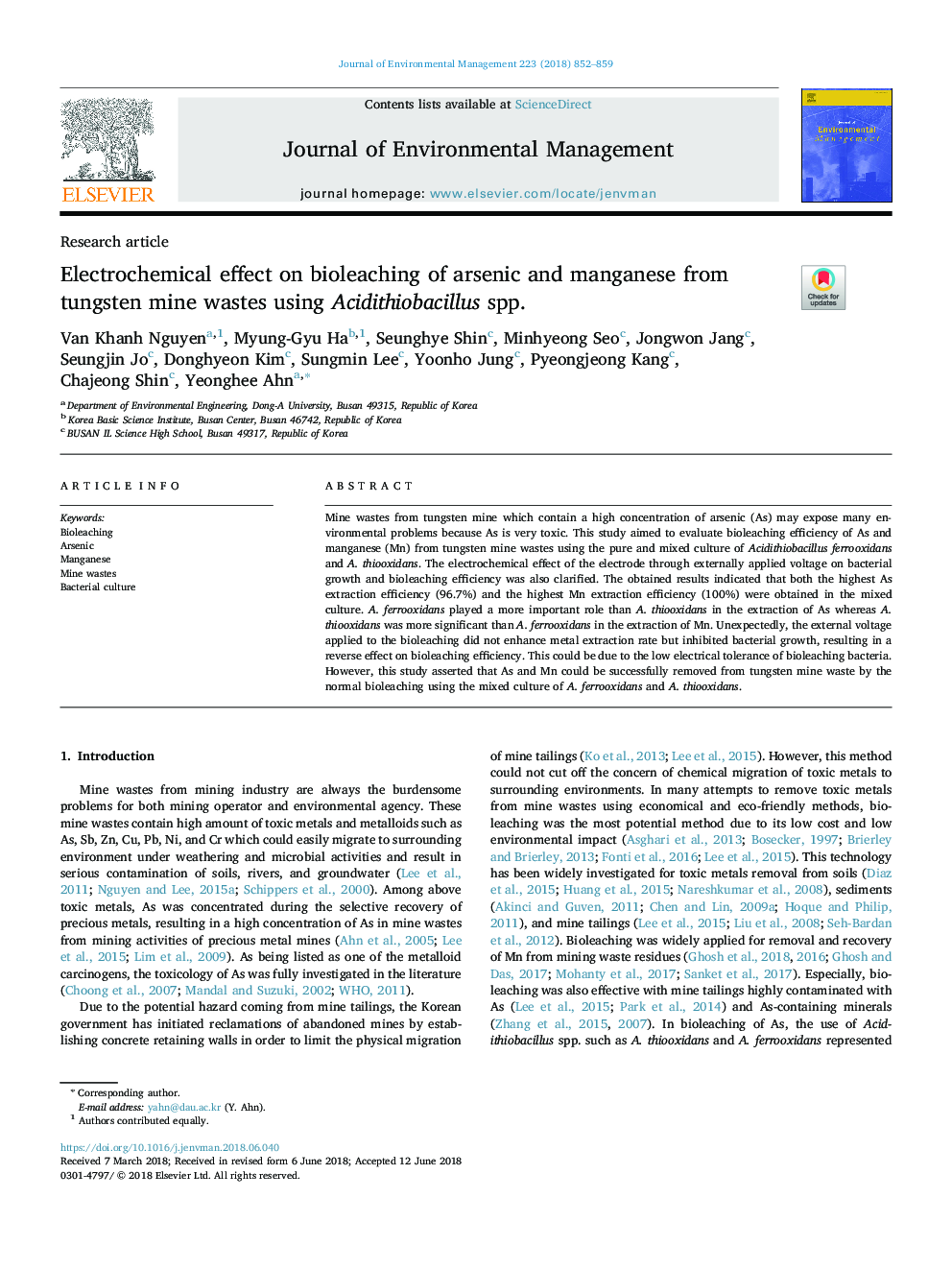| Article ID | Journal | Published Year | Pages | File Type |
|---|---|---|---|---|
| 7476251 | Journal of Environmental Management | 2018 | 8 Pages |
Abstract
Mine wastes from tungsten mine which contain a high concentration of arsenic (As) may expose many environmental problems because As is very toxic. This study aimed to evaluate bioleaching efficiency of As and manganese (Mn) from tungsten mine wastes using the pure and mixed culture of Acidithiobacillus ferrooxidans and A. thiooxidans. The electrochemical effect of the electrode through externally applied voltage on bacterial growth and bioleaching efficiency was also clarified. The obtained results indicated that both the highest As extraction efficiency (96.7%) and the highest Mn extraction efficiency (100%) were obtained in the mixed culture. A. ferrooxidans played a more important role than A. thiooxidans in the extraction of As whereas A. thiooxidans was more significant than A. ferrooxidans in the extraction of Mn. Unexpectedly, the external voltage applied to the bioleaching did not enhance metal extraction rate but inhibited bacterial growth, resulting in a reverse effect on bioleaching efficiency. This could be due to the low electrical tolerance of bioleaching bacteria. However, this study asserted that As and Mn could be successfully removed from tungsten mine waste by the normal bioleaching using the mixed culture of A. ferrooxidans and A. thiooxidans.
Related Topics
Physical Sciences and Engineering
Energy
Renewable Energy, Sustainability and the Environment
Authors
Van Khanh Nguyen, Myung-Gyu Ha, Seunghye Shin, Minhyeong Seo, Jongwon Jang, Seungjin Jo, Donghyeon Kim, Sungmin Lee, Yoonho Jung, Pyeongjeong Kang, Chajeong Shin, Yeonghee Ahn,
